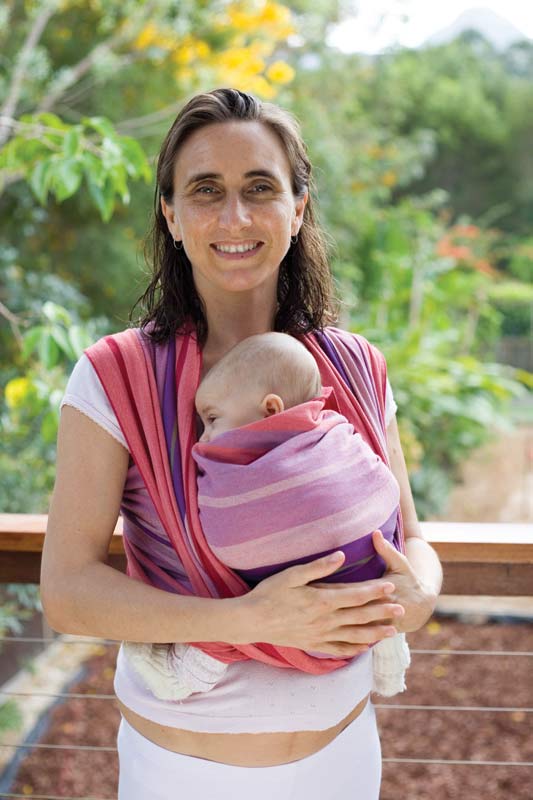Many parents are advised to walk, jiggle and rock a crying baby, or ‘wear down’ a ‘fussy baby’ to sleep. However, from an Aware Parenting perspective, (where crying serves two functions for babies), there is another way to help an upset baby to feel calmer and go to sleep.
The first type of crying indicates that the baby has an immediate need (such as touch, food or physical comfort), which requires fulfilling; it alerts the parent to respond to this need.
The second type of crying has the function of relieving stress, over-stimulation, and trauma. When all of a baby’s immediate needs have been met, and he is still crying, then it is likely that he is crying to release stress. For this to happen, he needs to be held in arms without distraction from the crying. A baby who has released his daily stress in this way falls asleep simply being physically close to mum or dad. He does not require jiggling, feeding, or rocking. Babies who are jiggled, rocked and walked whenever they need to release stress learn to move whenever they are upset, leading to toddlers who never seem to be able to sit still.
Aletha Solter says, ‘Movement stimulation is important for babies, but the timing for this is crucial. It is best to save activities such as bouncing, swinging and rocking for times when babies are happy, alert, and ready for stimulation. Do not wait until your baby fusses. Babies do not cry because of a need for these … forms of movement. Bouncing and rocking will only distract them from their need to cry.’ When a baby is crying or fussing, he is asking either for an immediate need to be met, or to release stress through crying in arms.
Some people believe that babies need to be calmed down with movement because they experienced continuous movement whilst in the womb. However, for a lot of the time the mother was sitting or sleeping and then the baby only experienced small movements of the mother’s breathing and digestion. Simply holding a baby close provides this same level of stimulation. ‘If babies cry whilst being held closely, it is time for either feeding or respectful listening, not frantic attempts to distract the baby.’
It is commonly noted that hyperactivity is more common in boys than girls. We can postulate why when we learn that parents generally rock and bounce baby boys more than baby girls.
Parents can meet all of a baby’s needs for closeness by carrying him. They can also help him heal from stress by calmly holding him without bouncing, rocking or walking when he needs to cry.
Published in Kindred Magazine, 2007 www.kindredmedia.com.au
